Re-vegetation Results
Overall the re-vegetation plots experienced significant insect and invasive plant infestation. The kelp amendments used to improve the soil quality were successful in decreasing bulk density and increasing the nitrogen content of the soil and improving the planting conditions. Over time, cord grass grew at the same rate in both the amended and unamended plots, while S. foliosa stem length and plant density were significantly greater in the kelp-amended plots. The re-vegetation cells located near creeks did not differ significantly from the cells further from creeks.
Site Experiment 1:
Suaeda esteroa was planted as an experimental nurse plant. As a nurse plant, S. esteroa would aid the recruitment of seedlings and would be planted as individuals and in clusters. Additional artificial structures were added to aid the nurse plants and other plant recruitment as well.
Result: Nearly all the nurse plants died and there was no seed recruitment.
Site Experiment 2:
Added Limonium californicum, S. esteroa, and Frankenia individuals in three species clusters so that mutualistic intereactions could aid seed recruitment and development.
Result: Seedling survival still low, the burlap bags used to protect plants were covered with sediment and there was low recruitment.
Invertebrates-
Initially benthic invertebrate samples showed a population spike from 1500 individuals/m² to 5500 individuals (6-10 months after opening). The population then stabilized at ~2700 individuals.
Spionid polychaetes and amphipods were the first colonizers, followed by capitellid polychaetes.
Unfortunately, the invertebrate assemblage decreased in size after sedimentation event in 2001 and the dominant species shifted from amphipods to dominance by oligochaetes and polychaetes. Amphipods later returned but were displaced by oligochaetes.
Gastropods later became dominant due to large increase in Cerithidae californica. These snails had the greatest density in the mudflat and the lowest in the marsh plain- possibly because the mudflat is closes to the main channel, which allows post larvae to settle and develop.
Fish-

After the initial tidal flushing of the area, arrow goby and longjaw mudsucker were the first species to establish themselves on the site. Soon after, arrow goby and killifish were the most frequent fish present in samples. Killifish express site fidelity, as they rely for food on the algal-supported food chain of the area.
In December of 2000, striped mullet showed population dominance, but disappeared shortly after. Also in 2000, the staghorn sculpin was found in all subsequent winter and spring samples.
Birds-

Present Activity:
-Monitoring: SWMP
On-site Research Projects:
“Interactions between vascular plants and nitrogen-fixing bacteria in southern Californian wetlands: The role of microbial diversity and anthropogenic disturbances” (Serena Moseman)
Abstract: Studies the nature of nitrogen fixation in Spartina foliosa and how sedimentation affects their activity and diversity.
